A systematic cover up of bodies
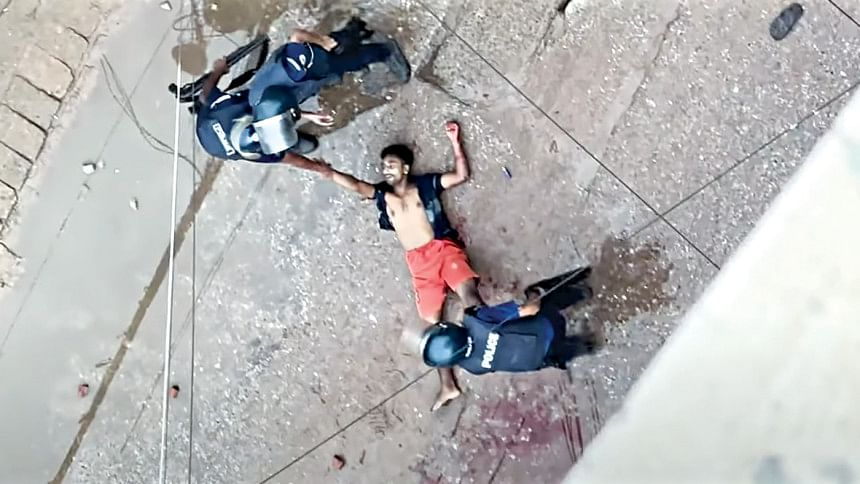
Seven months after the July uprising in Bangladesh, many protesters still remain missing. We investigated 31 cases: six were buried as unclaimed bodies at Rayerbazar graveyard; four were identified by families from among the charred bodies in Ashulia; two were handed over to families after DNA testing; and 19 are still unaccounted for. We found evidence of systematic government efforts to cover up medical records and bodies of the victims so they can never be found again. This four-part series also documents how families were denied time to collect the corpses from hospital morgues, and how they are now waiting for the bodies of their loved ones.

On the afternoon of August 5, 2024, word spread across the country that Sheikh Hasina fled to India. In Gazipur, like elsewhere in the country, thousands poured into the streets in celebration. But there was also anger.
A group of protesters started chanting slogans outside Konabari Police Station, and the police opened fire. The protesters dispersed, but the cops kept hunting them down in nearby alleys.
Md Ridoy, 20, a student and an autorickshaw driver, found himself trapped in one such alley. The cops cornered him, dragged him onto the main road, right in front of Shareef General Hospital, according to authenticated video footage seen by The Daily Star.
Six officers closed in–one raised a stick, another held onto his shirt so he could not escape. Meanwhile, a third, later identified as Constable Akram, slowly stepped behind him with a gun in hand, like a predator marking its prey. Another cop slapped him. Simultaneously, Akram put the gun in his back and then pulled the trigger!
Ridoy collapsed, but the 20-year old was still breathing. The cops walked away as Ridoy bled profusely.
Minutes later, three officers returned, and carried him behind the police lines from where they were still firing at protesters. From there, three others, one in uniform and another in civilian clothing, dragged him towards an alley which leads straight to the Konabari Police Station. Ridoy is never seen again.
The International Truth and Justice Project, an organisation documenting crimes against humanity, has also investigated this incident.
"We went to the Konabari Police Station the next day. All we could find was the lungi Ridoy was wearing underneath a desk," said Md Ibrahim, Ridoy's brother-in-law.
This newspaper found another video from the night of August 5, 2024, which shows the inside of the Konabari Police Station. Some policemen were seen making preparations to leave. In the video was a man wearing a white sleeveless undershirt and a lungi. Ridoy's relatives and locals identified him as Abed Ali, a trader.
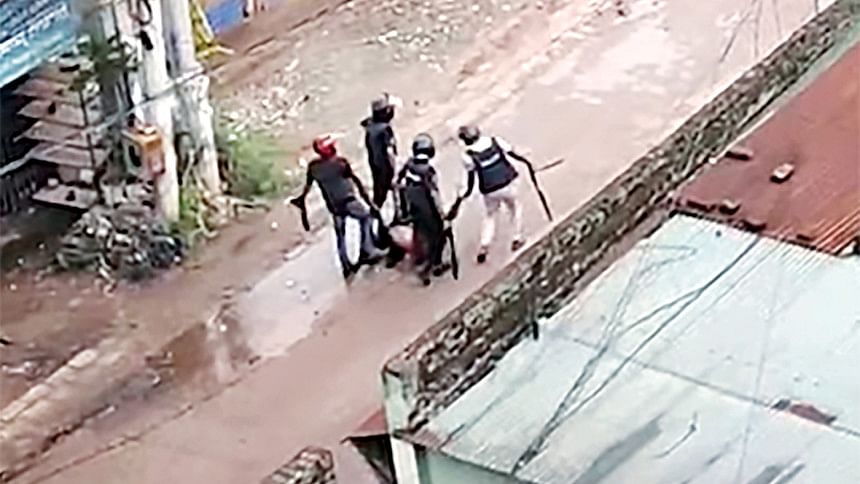
According to Ibrahim and five locals, Abed helped the cops in disposing of Ridoy's body. Abed Ali could not be reached for comment.
Seven months on, Ridoy's family does not know where his body is. His name is not on the list of July martyrs prepared by the government, and his family is yet to receive any compensation from the government, his sister Jesmin Akhter said.
Five policemen, including Constable Akram and former Gazipur Detective Branch inspector Mohammad Shafiqul Islam, have since been arrested over Ridoy's killing. The case now sits before the International Crimes Tribunal.
A MASSACRE
As Ridoy bled out in Gazipur, a massacre unfolded in Savar's Ashulia.
Since the morning of August 5, Sheikh Hasina's final day in power, police were shooting relentlessly, blocking protesters from marching to Dhaka. Bodies were dropping one after another, blood soaking the streets.
A video that later emerged shows six bodies, bloodstained and barely covered, lying stacked on a van in front of Ashulia Police Station. One man was still moving and breathing, his fingers twitching.
In the video, later authenticated by fact checkers, Dhaka District Detective Branch Inspector Arafat Hossain is seen walking past. Beside him stands Masudur Rahman, officer-in-charge of Ashulia Police Station.
Then—flames. The bodies burn.

At least one of these victims, the one who was still seen moving and breathing, was certainly burned alive. Their remains were subsequently dumped in Ambagan graveyard, next to the police station.
The next day, the graves were opened, and six charred bodies were pulled from the earth. Families identified four of them–Ash-Sabur, Sazzad Hossen Sajal, Tanjil Ahmed Sujoy, and Baygid Bostame. Their faces barely recognisable, some were identified only by their clothes and identity cards.
The remaining two bodies are completely unrecognisable and have been sent for DNA profiling after families contacted police, said Kamal Hossen, inspector (investigation) of Ashulia Police Station.
The International Crimes Tribunal is now investigating this case. DB Inspector Arafat Hossain and ex-additional SP of Dhaka Abdullahil Kafi have been arrested over this incident.
The attempted cover-up in Gazipur and Savar is only the tip of the iceberg.
The UN report on the July uprising says that there are cases where "police collected bodies of unidentified victims, and it is unclear to what extent the bodies were later handed over to morgues and duly reported to health authorities."
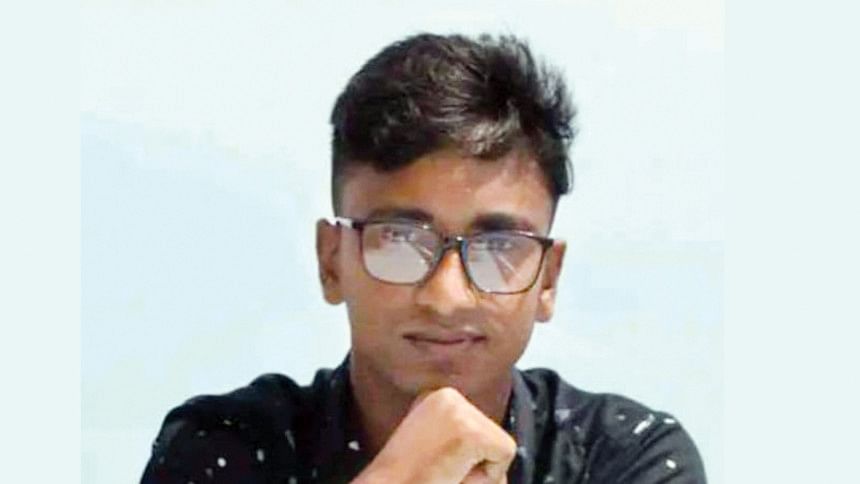
About the burning of bodies, the report says that police did so to "create the false impression that the victims had been killed by protesters."
Meanwhile, at least 5 protesters from Savar still remain missing. Tamim Sikder, Moniruzzaman Milon, Omor Faruk and Abul Hossen went missing on August 5 from near Ashulia police station. Shahadat Hossain, a day labourer, remains missing since August 4, fellow protesters and family members said.
FAMILIES DENIED TIME TO FIND BODIES
Sohel Rana, 28, went missing on July 18 near Jatrabari. His younger brother, Md Nabil, stepped out the next morning to look for him but could not go far. Jatrabari was a warzone.
The government enforced a countrywide curfew that night, and the internet had been shut down.
Nabil still went out the next morning again to search for his brother, but got assaulted by the cops. He finally found his way inside Dhaka Medical College Hospital on July 21, risking his life amid curfew.
"There were bodies stacked on top of each other. Each freezer had two bodies in it," he said.
But he could not find his brother among so many bodies. Nabil returned to DMCH and visited Anjuman Mufidul Islam, a burial service, multiple times before August 5, but found no luck.
"We went to the Konabari Police Station the next day. All we could find was the lungi Ridoy was wearing underneath a desk,"
Sixteen days after Sheikh Hasina's fall and 34 days after Sohel disappeared, Nabil found his brother's photograph at DMCH on August 21. Later, he rushed to Anjuman only to find that his brother, along with eight others, was buried at an unmarked grave in Rayerbazar [Read more in Part 1] on July 24.
The Daily Star has tracked down the unnamed General Diary that Shahbagh police filed for Sohel. It states that Sohel was shot during protests in Jatrabari's Kajla area and died while receiving treatment at Dhaka Medical's emergency ward on July 18.
We also obtained Sohel Rana's inquest report. It says he died from multiple pellet wounds near the chest. Bruises on his back and other parts suggested possible torture before death.
Meanwhile, Md Assadullah, a 30-year-old private car driver, left his Uttara home after lunch on July 19. He was shot on Road 2 of Uttara's Sector 7.
Video footage verified by this newspaper shows Turag Thana Chhatra League Vice-President Murtafa Bin Omar, alias Sathil, wielding a shotgun, firing indiscriminately at protesters in Uttara that day.
With him were Jubo League leader Sohel Rana, councillors Yuvraj and Naim, and Yuvraj's son Leon, according to protesters, locals and the July Revolutionary Alliance, a student platform documenting the massacre.
Several shots, fired by Sathil, hit Assadullah, according to three protesters and the CCTV footage seen by The Daily Star.
Assadullah's family received a call from a protester that night saying he had been shot.
The curfew had already been announced. The next morning, his wife Farjana Akter went to Uttara Crescent Hospital and then DMCH to find him.
When she was looking for her husband in the morgue, emergency section, and other wards of DMCH, Assadullah was still alive. He was receiving treatment at the hospital's burn unit, according to CCTV footage seen by this newspaper.
There, lying in a bed, he took his last breath on July 22. Two days later, he was buried at Rayerbazar in an unmarked grave. Meanwhile, Farjana kept looking.
Sathil faces at least 11 cases over murder during the July uprising, locals and police sources said. Sathil and the rest of the AL activists seen in the video are now on the run, and could not be contacted for comment.
On July 19, the same day Assadullah was shot, Faisal vanished from Uttara, and Rafiqul from Gopibagh. They too, were buried in Rayerbazar on July 24 as unclaimed bodies.
A request for burial sent to Anjuman from Shahbagh police station, along with pictures of the bodies, writes, "As no one claimed these individuals, we are handing over the bodies to Anjuman Mufidul Islam for burial."
But the fact is, families were still looking for their loved ones–they only did not know where to find them.
[Our Savar Correspondent Aklakur Rahman Akash and Tangail Correspondent Mirza Shakil Contributed to this report]
Read part 4 tomorrow on the agonising wait of the families for the bodies of their relatives.
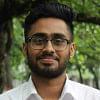
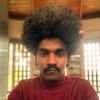
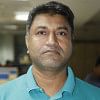
 For all latest news, follow The Daily Star's Google News channel.
For all latest news, follow The Daily Star's Google News channel. 







Comments